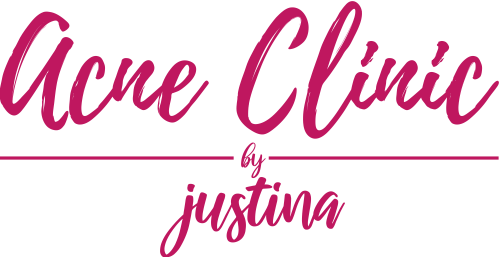WHAT IS ADULT ACNE?
People think if they hit past puberty, acne simply stops. For most people, it does but some percentage in the population and predominantly women still suffer this skin condition into their mid-30s or so. Some women and men even survive adolescence and young adulthood acne-free but develop it in their 30s and 40s. Rosacea is sometimes mistaken as Adult Acne but this is a totally different skin condition, as it causes redness and the blood vessels are visible on the face.
Pyoderma Faciale or Rosacea Fulminans, another skin condition that resembles a cross between an acne and rosacea, which is an unusual skin condition occurring in young adult women. This is considered a severe form of Rosacea. This dermatologic condition is characterized by inflammatory papules, pustules, and nodules on the face that doesn’t arise from comedones. Starts abruptly and rarely persists more than one year or so and is not associated with oily skin.
It is a fact that nearly all adult acne is caused by inflammation and clogged pores. As acne in a hereditary skin problem, it’s usually a combination of various factors that trigger it. It sounds confusing and even a bit mysterious but we will break it down how adult acne develops.

Factors that contribute to Adult Acne:
1. Genetics
This is a part of the process of aging, and for women, they experience it during PMS (Premenstrual Syndrome), menstruation, pregnancy, postpartum (after giving birth), and breastfeeding.
Steer clear of low-estrogen birth control pills as these are higher in androgen hormones content and make acne-prone skin worse. Namely Norplant, Depo-Provera shots, most IUDs like Mirena, Skyla and Liletta can cause acne breakouts. Polycystic Ovarian Syndrome (PCOS) breakouts are caused by high testosterone.
Physical stress is brought about by the lack of sleep and rest, dehydration, external elements like weather and environmental factors like loud noises, cold weather or hot temperatures, etc. Emotional stress is when a person is feeling scared, anxious, afraid and / or pressured. Stress from work can be considered a combination of both physical and emotional stress that’s why having a good work-life balance is essential.
It can make acne worse and when you’re under stress; your body produces more cortisol, a.k.a., the stress hormone. Chronic and long-term stress is a well-known trigger that contributes to acne development due to higher levels of sebum production. Overall these can trigger skin issues, hormonal changes, weakened immunity and inflammation.
Stress management and finding ways to cope will benefit you in more ways than one. Relaxing, catching on your sleep, exercising and self-care go a very long way.
Exposure to the sun especially for prolonged periods causes dark spots and long-term pigmentation. The harmful UV rays can cause premature skin aging and causes damages such as wrinkles, leathery skin and the worst case scenario, skin cancer. The rationale is that when the skin dries out, it makes the body to compensate in its oil production, thus, leading to acne.
Invest in some non-comedogenic, hypoallergenic and fragrance free makeup. Avoid putting on makeup with dirty hands. Wash your hands properly before applying it on. Don’t ignore allergic reactions and don’t go to bed with makeup on. Clean your face properly and remove all traces of makeup prior hitting the snooze button.
A well-balanced low-glycemic diet that is low in simple sugars can be very beneficial to your health and well-being, especially your skin.
This is an easy quick-view guideline to help you reduce your food intake that contains iodides, androgens and anything that causes inflammation and the recommendations that you can substitute. These may not all be applicable to you. You must determine your food triggers and food sensitivities.
A thyroid disorder can also cause adult acne. If the thyroid is underactive, the body may suffer from a progesterone deficiency and consequently leads to estrogen dominance that causes breakouts and oily skin. Unfortunately, the medications used to treat thyroid issues can also trigger acne.
Some prescription medications can cause adult acne like the ones for bipolar disorder and thyroid issues, or any medication that contains quinine, Isoniazid, Immuran, Danazol, Gonadotrophin, Cyclosporin, Disulfuram, Phentermine, and ADD/ADHD drugs.
Nicotine, a chemical found in most cigarettes increases sebum production and reduces Vitamin E. Vitamin E is an antioxidant and essential to a person’s overall health and reduction of this may increase bacterial infections that causes acne.
